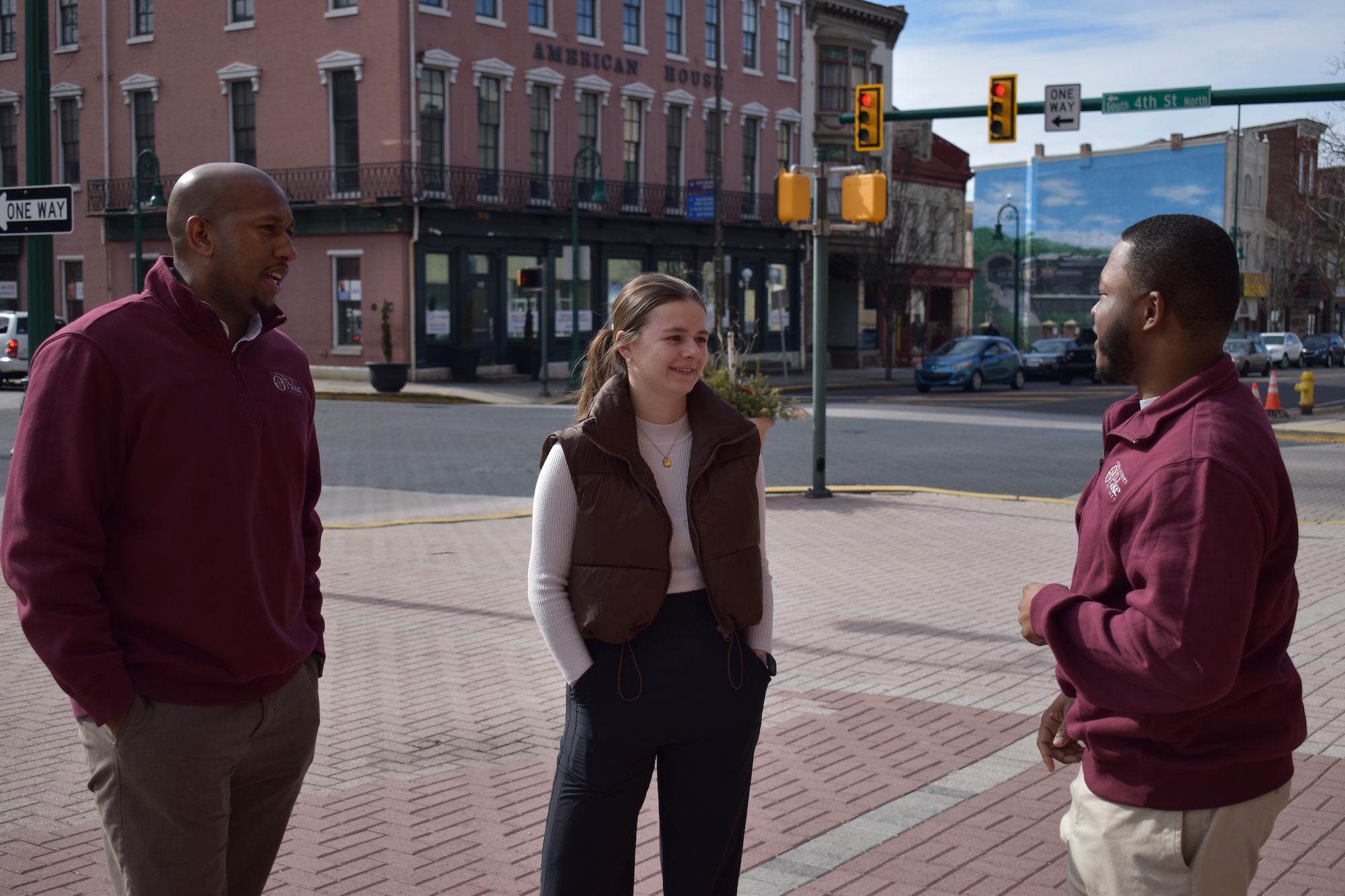From left: O’Pake Insitute Graduate Assistant of Community Outreach and Engagement, Adonis Fleming; Senior Political Science Major, Jasmine Hughes; and Fellow of Community and Government Relations, Jamal Dancy
$400,000 award to advance research, entrepreneurship, and workforce development
The U.S. National Science Foundation (NSF) invests $400,000 over three years in Alvernia University’s O’Pake Institute for Economic Development and Entrepreneurship through the first-ever Enabling Partnerships to Increase Innovation Capacity (EPIIC) Grant.
“The NSF's commitment to extending the student experience beyond the classroom is aligned with our mission in expanding students’ access to impactful experiential learning opportunities that meet local and industry-wide talent demands through intentional partnerships,” said Alvernia University President, Glynis A. Fitzgerald, Ph.D. "This grant will be instrumental in supporting Alvernia's O’Pake Insitute as we expand into the former American House in downtown Reading. We look forward to the positive impact this grant will have for Reading and Alvernia University.”
The EPIIC Grant provides $19.6 million to nearly 50 teams at U.S. institutions of higher education. The NSF awarded Alvernia through the Collaborative Research: Research Infrastructure: EPIIC: Collaborative Proposal: LIGHT UP: Leveraging Innovation to Grow High Tech and University Partnerships. According to the NSF, the LIGHT UP Collaborative focuses on three goals that will (1) expand and improve each institutions’ structural support systems for economic development initiatives; (2) build a platform to drive more industry and government partnerships; and (3) increase innovation enterprise development. It aims to serve as a model for capacity building and partnership engagement through a community of practice.
"NSF aspires to accelerate the nation's research and innovation enterprise and empower all Americans to participate in the science- and technology-driven workforce," said NSF assistant director for Technology, Innovation and Partnerships (TIP), Erwin Gianchandani. "EPIIC reinforces NSF's commitment to develop new, inclusive innovation ecosystems by connecting diverse networks of partners to work together to drive the expansion of key technologies — and the technology workforce — in the U.S. and in turn address pressing national, societal and geostrategic challenges."
The EPIIC grant will allow Alvernia’s O’Pake Institute to expand applied research activities in partnership with local industry and faculty “scholar-preneurs,” increase O’Pake’s full-time staffing and student capacity by 25% year over year to enhance student experiential learning, maximize partnership engagement and ultimately increase Alvernia’s impact on regional economic and cultural development.
"Partnerships with our region’s primary agencies and employers in key industries have been instrumental in the O’Pake Insitute’s growth and sustainability since its inception in 2020,” said Vice President of Research, Economic Development and Innovation Rodney S. Ridley Sr., Ph.D., RTTP. “This grant will allow us to maximize partnership engagement while adding additional staff to bolster student experiential learning through increased research opportunities with Alvernia’s faculty members and engaging in projects that serve our local and regional SPARK business incubator clients and tenants in Reading and Pottsville.”
In addition, Alvernia’s recent partnership with Berks Community Health Center involving expansion into the former American House building includes additional business incubator space and retail space for local businesses to expand upon the spaces in the John R. Post Center at Reading CollegeTowne. Over 300 new jobs are estimated to be created through the student-powered business incubator.
This material is based upon work supported by the National Science Foundation under Award No. 2331571. Any opinions, findings and conclusions or recommendations expressed in this material are those of the author(s) and do not necessarily reflect the views of the NSF.
